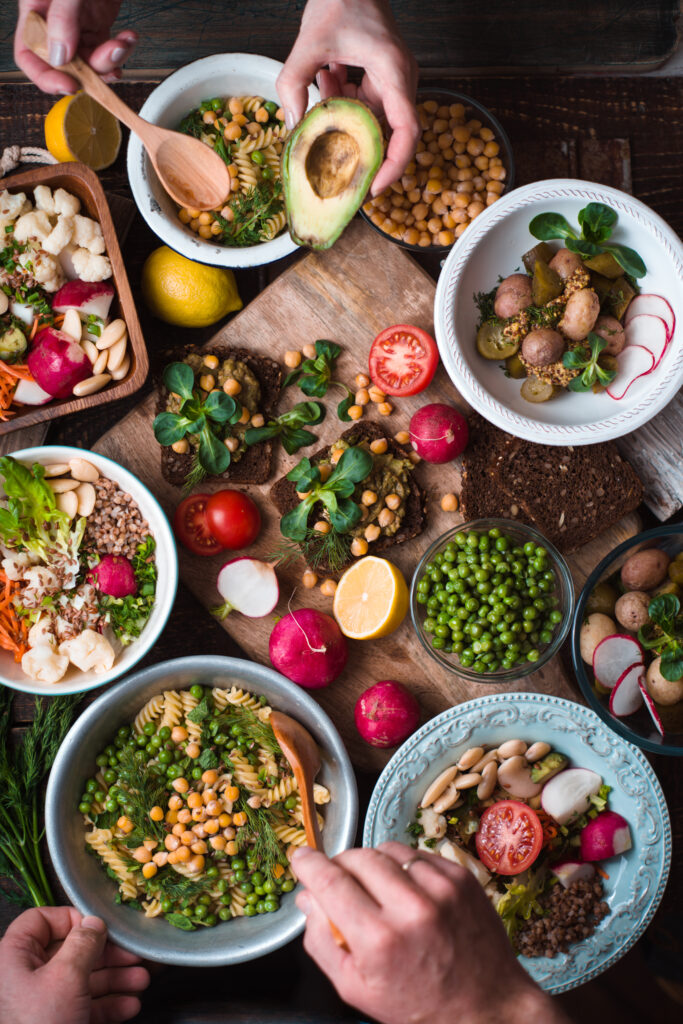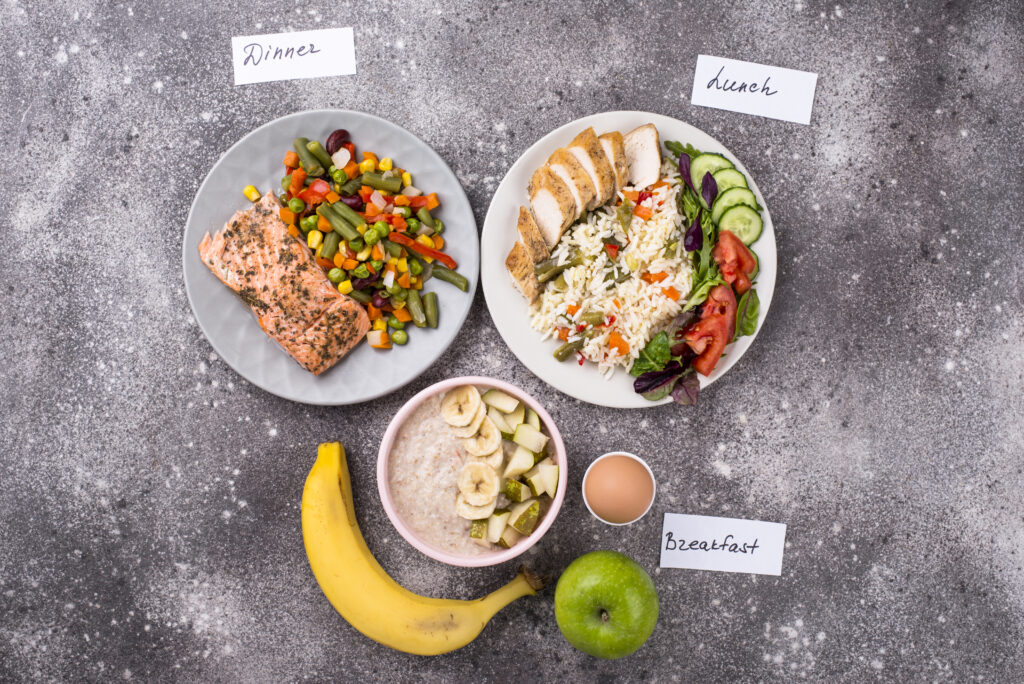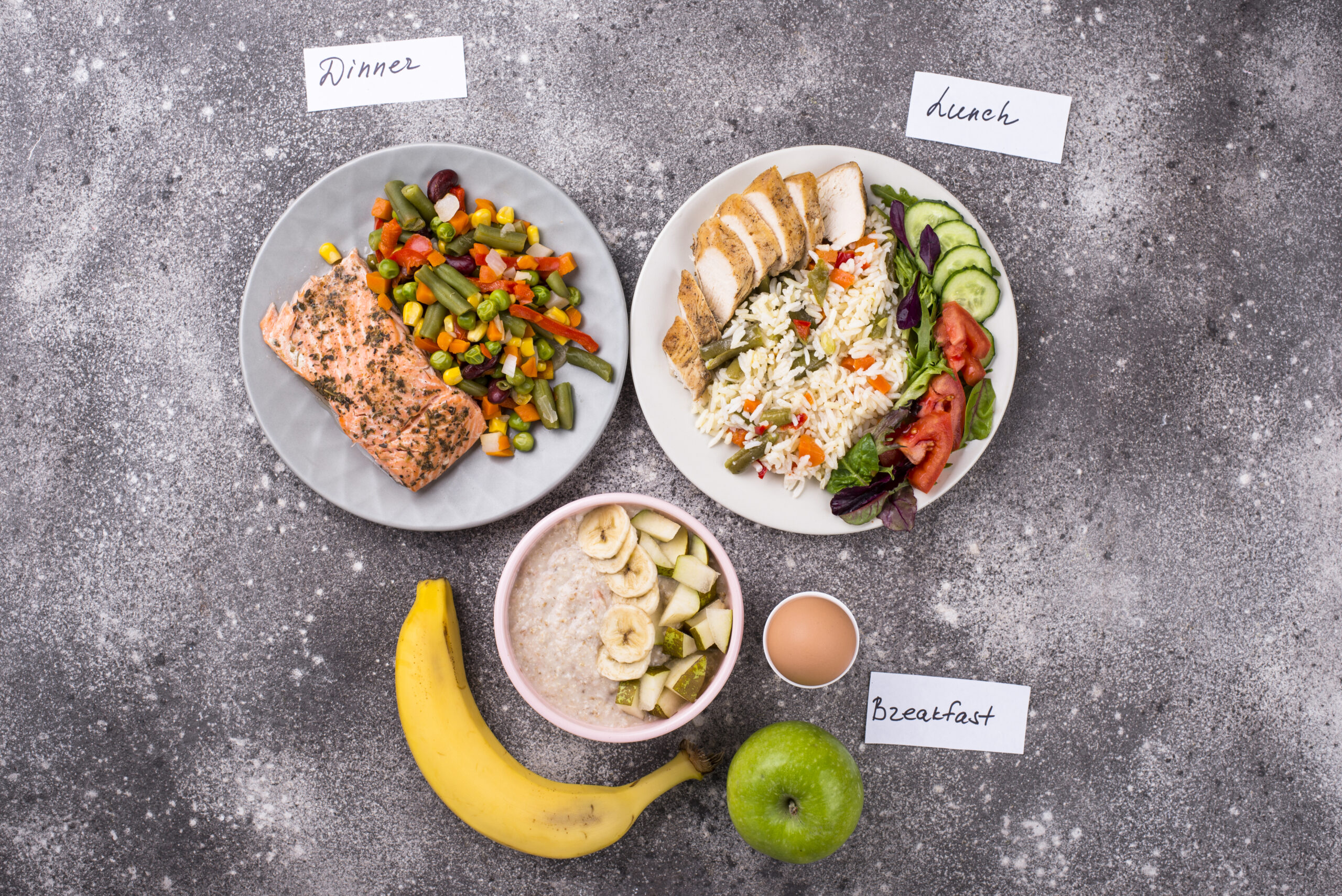In a world inundated with diet trends and culinary fads, finding a sustainable and satisfying way of eating can feel overwhelming.
Enter the Roam Diet, a unique approach that not only emphasizes delicious and nutritious meals but also aligns with environmentally friendly and ethical practices. At its core, the Roam Diet embraces local produce and seasonal foods, making it a flavorful and sustainable choice that’s gaining popularity.
Understanding the principles of the Roam Diet opens the door to a lifestyle where nutrition and environmental consciousness intertwine seamlessly.
Unlike many traditional diets, the Roam Diet recipes prioritizes flexibility and practicality, ensuring that followers can enjoy diverse meals without sacrificing taste or efficacy.
With its focus on fresh, local ingredients and easy preparation, this diet stands apart as a beacon of health and sustainability.
This guide is designed to be your comprehensive partner in embarking on the Roam Diet journey. From selecting key ingredients to overcoming common challenges and crafting delicious recipes, you’ll discover just how beginner-friendly and rewarding this diet can be. Whether you’re seeking to boost your nutrition, reduce your environmental impact, or simply explore new culinary avenues, the Roam Diet presents a tasty, viable path forward.
Table of Contents

What Is the Roam Diet?
The Roam Diet is all about embracing whole, unprocessed foods. This approach promotes balanced nutrition and energy while encouraging mindful eating. It mirrors the lifestyle of nomads by focusing on local, seasonal foods. This means enjoying a variety of fresh, nutrient-dense options.
The diet not only supports personal health but also environmental sustainability. It encourages eating habits that are flexible and in tune with nature.
The allowed foods include lean proteins, whole grains, healthy fats, and a lot of vegetables. It advises avoiding heavily processed foods. Unlike strict diets, the Roam Diet is about adaptability and balance.
Principles of the Roam Diet
The Roam Diet stands for flexibility and sustainability in eating. Instead of following strict food rules, the diet promotes an adaptable approach.
Eating seasonal foods is a key principle here. This ensures freshness and helps reduce the environmental impact linked with food transport. Whole, unprocessed foods like vegetables, lean meats, and whole grains are emphasized.
They enhance nutritional value and provide health benefits naturally. The diet aligns with environmental concerns by minimizing the need for food to be transported over long distances. This helps in reducing the carbon footprint.
Differences from Other Diets
The Roam Diet is unique with its focus on locally and seasonally available foods. Unlike keto or paleo diets, it doesn’t stress specific macronutrient ratios. Instead, it prioritizes the quality and source of food.
The Roam Diet takes a balanced approach, including both plant and animal-based foods, adapting to seasonal changes. It’s considered more flexible than many diets.
This is because it emphasizes whole foods and balanced eating, not strict calorie counting. It allows for a range of nutrient-dense foods like lean proteins and healthy fats. Importantly, it avoids heavily processed foods.

Key Ingredients in Roam Diet Recipes
The Roam Diet focuses on fresh, whole foods for a balanced and nutritious meal plan. Central to the diet are fresh, seasonal produce like leafy greens and root vegetables. These ingredients not only add flavor to meals but also pack them with vitamins and minerals. Whole grains such as quinoa and brown rice provide essential fiber and carbohydrates. Lean proteins from sources like chicken, and tofu offer vital nutrients for muscle health. Nuts and seeds add a crunchy, nutritious boost with their healthy fats and proteins. By avoiding processed foods, the Roam Diet emphasizes natural ingredients, fostering healthier eating habits.
Local Produce
Local produce is a key component of the Roam Diet. Eating local means selecting fresh fruits and veggies grown nearby. It aligns with the seasonal eating principles of the diet. However, sourcing local produce can be challenging during colder months when supply dwindles. This may limit food choices but also encourages creativity in meal planning. Successfully following the Roam Diet involves planning meals around the availability of local produce. Though it requires some effort, the rewards include flavorful seasonal dishes and support for local farmers.
Seasonal Foods
Seasonal foods form the backbone of the Roam Diet, promoting sustainability and reducing the carbon footprint. By focusing on these foods, you support local farmers and their sustainable methods. Seasonal items are usually fresher and tastier, hitting their peak flavor, which minimizes waste. The Roam Diet encourages consuming whole, unprocessed seasonal foods, enriching your meals with plant-based and sustainably sourced animal products. By using fresh seasonal ingredients, you enhance the flavor and enjoyment of Roam Diet recipes, proving healthy eating with seasonal foods can be both delicious and environmentally friendly.
Nutritional Powerhouses
The Roam Diet is rich in whole, unprocessed foods like lean proteins, grains, and vegetables. These elements are essential for balanced nutrition and maintaining energy. Lean proteins such as grilled chicken play a vital role in supporting muscles and metabolism. Whole grains provide complex carbohydrates and fiber, promoting digestive health and sustained energy. The diet leans on nutrient-dense foods, helping with weight management by aiding digestion and curbing unhealthy cravings. A wide array of seasonal vegetables further boosts nutrient intake, supporting overall health and vitality. Embracing these nutritional powerhouses makes the Roam Diet a path to wellness.
Benefits of the Roam Diet
The Roam Diet is a lifestyle approach that emphasizes consuming whole, seasonal foods. It mirrors the patterns of a nomadic lifestyle by focusing on what’s locally available at any given time of year. This approach not only enhances personal health but also supports environmental sustainability. By prioritizing fresh, nutrient-dense foods, the diet aims to improve overall health and digestion. It also assists with weight management by encouraging the consumption of unprocessed and natural foods. This way of eating fosters mindful eating, which helps individuals form a deeper connection with their food. Flexibility and simplicity are at the heart of the Roam Diet, making it a practical choice for many.
Nutritional Advantages
The Roam Diet offers numerous nutritional benefits by focusing on fresh and nutrient-rich foods. Eating a range of seasonal ingredients can lower the risk of chronic diseases. Whole foods and unprocessed ingredients are central to the diet, improving digestion and boosting energy levels. This focus helps manage weight by reducing the intake of processed foods. By integrating nutrient-dense options, the Roam Diet supports a healthier lifestyle without calling for extreme dietary changes. Better digestion and steady energy levels can lead to a more balanced and productive day. These factors all contribute toward fostering long-term health improvements.
Environmental Impact
Adopting the Roam Diet can positively influence the environment by emphasizing seasonal and locally sourced foods. This practice reduces food waste and supports sustainable agricultural movements. When individuals choose local foods, they minimize the environmental toll of long-distance transportation. This diet encourages supporting local farmers, which promotes sustainable farming practices and lessens the dependence on large-scale agriculture. The Roam Diet also leans toward plant-based foods, which help mitigate negative environmental impacts tied to animal agriculture. Its built-in flexibility allows people to make environmentally friendly food choices. This, in turn, fosters a more sustainable lifestyle that many find fulfilling.
Lifestyle Flexibility
The flexibility of the Roam Diet is one of its key benefits. It lacks strict food rules, meaning followers do not have to count calories. This diet supports personal preference, allowing for ingredient swaps to suit needs such as vegan, gluten-free, or low-carb. Shifting with the seasons, the diet relies on whole, unprocessed foods, making it adaptable to available ingredients. This emphasis ensures the diet fits any lifestyle easily, whether meal prepping or cooking for a family. Experimentation is encouraged, as using seasonal ingredients and herbs makes meals more enjoyable. This creative approach fosters a mindset where food becomes more than just sustenance—it becomes an experience.
Creating Roam Diet Recipes
Roam Diet recipes are crafted to blend seamlessly into various lifestyles. Whether you’re meal prepping for the week, cooking for your family, or creating a personal diet plan, these recipes simplify the process. They are highly adaptable, catering to vegan, gluten-free, or low-carb preferences without sacrificing the principles of healthy eating. Seasonal ingredients and a mix of fresh and dried herbs enhance the flavors of these nutrient-dense foods. A typical Roam Diet meal plan might include a fresh fruit smoothie for breakfast, a quinoa salad filled with cherry tomatoes and raw carrots for lunch, and a protein-rich dinner. This balanced approach ensures you get enough nutrients while allowing for creativity in the kitchen. Planning your meals around the seasons helps utilize fresh ingredients, simplifying your transition to this healthier option.
Ease of Preparation
Simplicity is at the heart of Roam Diet recipes. Most meals, like the quinoa and grilled chicken bowl, have a total prep and cook time of just 30 minutes. Ingredients are easy to find and include staples like quinoa, leafy greens, and roasted vegetables. Instructions use basic culinary skills like grilling and tossing, making them perfect for beginner cooks. Using seasonal ingredients is encouraged, which aids in preparation and keeps costs down. Versatile dishes such as quinoa bowls allow you to swap different proteins and seasonal vegetables. This makes preparation adaptable to accommodate various dietary needs such as vegan, or gluten-free diets.
Flavor Profiles and Enhancements
Roam Diet recipes focus on enhancing natural flavors. Olive oil and lemon juice bring out the best in leafy greens and roasted vegetables. Grilled chicken is seasoned with salt, pepper, and your favorite spices, adding a flavorful touch to meals. The inclusion of fresh and seasonal fruits and vegetables contributes to diverse and vibrant flavors. Whole grains like quinoa provide a nutty, earthy taste, forming the foundation of many dishes. Spices and herbs such as basil or thyme add depth and richness without processed flavor enhancers. This creates nutrient-dense meals that are both delicious and healthy.
Adapting to Different Lifestyles
The Roam Diet is flexible and adapts to any lifestyle. Its lack of rigid restrictions makes it easy to fit into your life. By prioritizing seasonal foods, it encourages you to align your eating habits with nature. This not only helps in reducing your environmental footprint but also supports farmers and local markets. Focusing on whole, unprocessed foods aligns with various health-focused lifestyles. The diet’s sustainable principles appeal to those seeking eco-friendly choices. Calories aren’t counted, catering to individuals who prefer a more intuitive eating style. This approach supports maintaining a healthy weight and effective weight management. By embracing these principles, the Roam Diet makes healthy eating simple and attainable.
Pro Tips for Success
Cooking at home can be both fun and fulfilling, especially with guidance from Michael, the AI chef. Michael combines culinary art with technology to make cooking accessible for everyone. His platform, TopTier Recipes, offers a variety of dishes to inspire you in the kitchen. Michael is all about exploring new flavors and revisiting classic dishes. He provides step-by-step guides and health insights related to different ingredients, helping you elevate your cooking experience. Whether you’re a beginner or an expert, these tips are designed to make your culinary journey enjoyable and insightful.
Meal Planning Strategies
Transitioning to the Roam Diet can be seamless with effective meal planning strategies. Preparing meals in advance helps keep your diet on track and stress levels low. Using seasonal ingredients makes meals more enjoyable and offers a variety. Quinoa bowls and roasted vegetables are recommended for their ease and nutrient richness. The Roam Diet focuses on balancing macronutrients, ensuring you have the right mix of proteins, healthy fats, and complex carbohydrates. A useful tip for maintaining flavor and freshness is to assemble your meals just before serving.
Maximizing Nutritional Intake
Roam Diet recipes are versatile, letting you swap ingredients to suit vegan, gluten-free, or low-carb diets. Fresh and dried herbs can bring out flavors while enhancing the dining experience. Quinoa and brown rice are nutritious bases, providing fiber and energy. Include leafy greens like spinach, kale, or arugula for a fresh taste and essential vitamins. Olive oil is key for healthy fats and helps with nutrient absorption. Make these simple yet effective substitutions to ensure your meals are both delicious and nutritious.
Keeping Costs Manageable
Making delicious meals shouldn’t break the bank. For instance, a meal of Mexican Beans can cost just $19.41 for three batches when using canned diced tomatoes, black beans, and taco seasoning. Include rice and the cost averages to $7.72 per meal, just $1.29 per person. Use sales and buy in bulk to further minimize costs, especially for beans and vegetables. Even with dietary preferences, small modifications can be made without a significant budget increase. You can create flavorful meals while keeping costs low by making large batches with versatile ingredients.
Overcoming Challenges
The Roam Diet encourages flexibility and sustainability, aiming for a balance between health and environmental goals. This approach may present several challenges for those new to it. Food choices must adapt based on season and location, making it a dynamic approach to eating. A key challenge is sourcing nutrient-dense foods that align with the diet’s principles while traveling or moving. The emphasis on whole, unprocessed foods means a shift from traditional eating patterns, which can be daunting. However, understanding sustainability principles and integrating them into everyday choices are crucial for long-term success on the Roam Diet. Beginners may face difficulties deviating from familiar eating habits, requiring adjustments to align with the diet’s core goals.
Seasonal Availability
Seasonal availability plays a critical role in the Roam Diet, affecting food variety and choice. This diet encourages eating what is available locally and seasonally, which can be challenging. In some climates, especially colder ones, finding fresh produce year-round can be difficult. This means meals must be planned with creativity to maintain variety. Seasonal eating might require extra effort in sourcing nutrient-dense foods when local options become limited. Transitioning to a diet heavily reliant on seasonal foods often necessitates changing shopping habits and being open to new foods. Embracing the seasonal principle of the Roam Diet, though sometimes complex, can lead to a closer connection with nature and local food cycles.
Budget-Friendly Options
The Roam Diet is mindful of budget constraints by promoting whole grains and plant-based proteins. Oats and brown rice are cost-effective and provide energy and fiber, while beans and lentils offer affordable protein. Purchasing in bulk, such as nuts and seeds, reduces costs while adding healthy fats to meals. Seasonal vegetables like leafy greens, carrots, and sweet potatoes are often less expensive, fitting well into this budget-conscious lifestyle. Avoiding processed foods not only supports health goals but also reduces spending, as these items often carry a premium price tag due to added sugars and refined oils. Thus, the Roam Diet offers both health and financial benefits.

Sample Recipes
Embrace the Roam Diet with this flavorful recipe: quinoa, grilled chicken, and leafy greens. It’s a nutritious blend perfect for a balanced meal. This recipe takes 30 minutes, including prep and cooking. Essential ingredients like olive oil and lemon juice add fresh flavors. To follow the Roam Diet with ease, plan meals using ingredients that can be reused. This approach not only saves time but also maintains a diverse menu. Seasonal ingredients keep the meals fresh and tastier. Prepare ahead to make this dietary lifestyle enjoyable. The combination of simple, nutrient-dense foods ensures a sustainable and satisfying eating routine that caters to various dietary needs.
Breakfast Ideas
The Roam Diet recommends starting your day with flexibility and variety. By emphasizing fresh, whole ingredients, breakfast becomes a nutritious experience. Avoid processed foods and refined sugars to provide a healthier start. Leftovers from previous meals like quinoa or grilled chicken can be reinvented for breakfast. This reuse not only saves time but also creates a versatile menu. Adding leafy greens such as spinach or kale to breakfast dishes boosts their nutritional value. Seasonal produce can guide your choices, providing freshness and regional availability. Explore endless breakfast possibilities while keeping health in mind on the Roam Diet.
Lunch Selections
Lunch under the Roam Diet is about using seasonal, whole foods warmly. Consider a quinoa and grilled chicken recipe that balances nutrition. For those looking for variety, a charcuterie board offers visually appealing options. It includes cold cuts, fresh veggies, cheese, nuts, and fruits. This option is great for groups or those who love grazing. If a quick protein-rich meal is more appealing, an egg salad sandwich uses pre-boiled eggs and keeps lunch fast yet satisfying. Ingredients like leafy greens easily pair with quinoa and chicken, supporting a nutritious diet that emphasizes local, fresh foods for an environmentally sustainable approach.
Dinner Delights
Roam Diet dinners are hearty and customizable. Grilled chicken with roasted sweet potatoes and carrots offers a satisfying meal. Adapt ingredients to suit vegan, gluten-free, or low-carb needs, ensuring each part enjoys flavorful nutrition. Seasonal ingredients mix with both fresh and dried herbs for a rich taste. Planning dinners ahead ensures adherence to the Roam Diet and convenience in your lifestyle. Avoid processed foods, refined grains, and sugary drinks at dinner to support improved health. This approach fosters a robust nutritional intake and aligns with the core values of the Roam Diet.
Snacks and Desserts
Snacks and desserts in the Roam Diet embrace fresh, seasonal ingredients. This focus enhances both flavor and nutrition. Consider a charcuterie board for snacking; it includes cold cuts, fresh cucumbers, cheese, nuts, grapes, and tomato slices. This convenient option aligns with values of ease and store-ability, ready whenever needed. Seasonal snack choices aid digestion, an essential factor in selecting components. The Roam Diet shuns processed foods, replacing them with whole ingredients. Opting for these nurtures a healthier lifestyle while satisfying the inevitable craving for something sweet yet wholesome.
